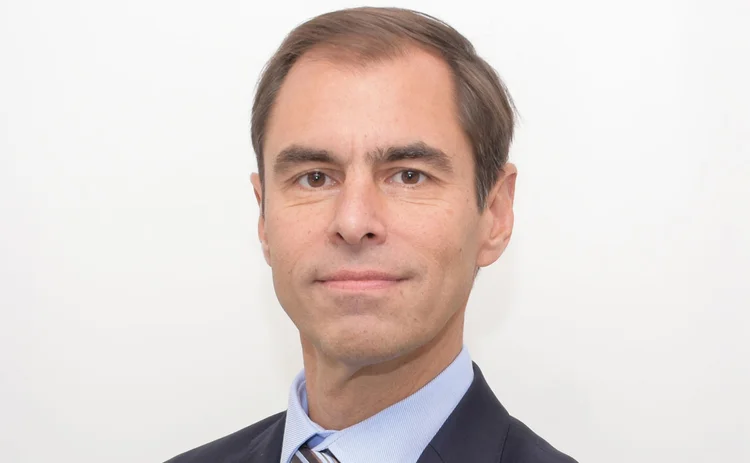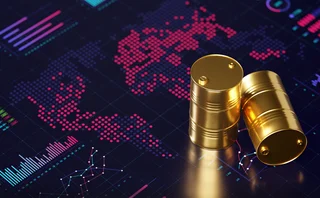
Precious metals house of the year: Credit Suisse
Energy Risk Awards 2022: Bank’s growth strategy leads to increase in clients and better liquidity provision

With inflation on the rise, gold is in vogue. The invasion of Ukraine prompted a run-up of the gold price from around $1,800 an ounce (/oz) in early February to a peak of more than $2,000/oz on March 8, before retreating into the $1,900/oz range. However, with gold futures volumes still some 50% below pre-pandemic levels, accessing over-the-counter liquidity has been critical to success in the marketplace, says John Estrada, the London-based global head of eMacro at Credit Suisse, winner of this year’s Precious metals house of the year.
“At a very high level, there’s no secret to this: when we have clients buying and selling through us, we can make markets because we can internalise those flows,” he says. “The more clients deal with us, the tighter the prices we can offer. You end up with a very positive cycle.”
Attracting liquidity to create that virtuous circle is, of course, easier said than done. “The market is extremely competitive,” Estrada says. “What we’re always asking ourselves is, how do we grow? I think our biggest value-add is that we’re hungry for growth.”
That approach to servicing clients involves accepting that, from time to time, the bank will lose money on a trade. “That’s part of trading; you can’t expect to win every time,” says Estrada. “We accept losses as part of the business and try to look at it more holistically. With a lot of our competitors, it feels like they are trying to find the bad apples and get rid of them … Once you start down that path, you end up dismantling the business.”
Credit Suisse is heading in the opposite direction. A sales push added more clients, across many countries, to its precious metals roster in 2021. The bank now claims 15–20% of the overall spot precious metals market.
Estrada’s hunger for growth is behind its continual innovation in technology. The bank has invested in its OTC offering, enabling it to electronically quote what it claims are the largest spot sizes in the market – up to 125,000 ounces in gold, three million ounces in silver, 20,000 ounces in platinum and 15,000 ounces in palladium.
It has also developed a pricing model that allows it to quote spot prices 24 hours a day, five days a week, even when the market is closed. Initially, that service relies on a “very basic model” that provides pricing based on the balance of buyers and sellers when the market is closed.
“The idea was that we start with a simple model and improve it over time,” says Estrada. “The improvements are where there’s a little secret sauce,” he adds.
That innovation has also seen Credit Suisse bring together the management of the precious metals business in its investment bank with that of its wealth management and private banking unit, within its Global Trading Solutions group. “Leveraging private banking and wealth management flow, we are able to show more axes to investment banking clients,” Estrada says. “Thus we were able to achieve significant growth in the institutional space while improving pricing for private banking and wealth management clients.”
It has also developed a ‘green gold’ offering, responding to market demand for “ESG-friendly solutions”. Partnering with Swiss refinery Valcambi, its premium Valcambi Green Gold is sourced exclusively from Australian mines that adhere to high standards of environmental, social and governance performance. Estrada concedes it is a somewhat niche product, but he hopes its existence will encourage improved ESG standards across the market: “What likely will happen is that normal gold becomes more and more green and, over time, the premium disappears.”
Among a pipeline of projects for this year is the building of a news-reading engine to improve the pricing Credit Suisse can offer, particularly outside trading hours. “We’re trying to become more efficient by reading the news directly with computers, and then moving our price before the market moves. That’s good for our clients because, if you don’t move your price and you lose money, you have to pass those costs on.”
He adds the project is still in its early days, given the challenges in automatically identifying unambiguously market-moving stories. There are some obvious examples, he says, such as a rapid increase in news prefiguring increased volatility, but “it’s super hard” for computers to understand the nuances involved.
Certainly, there’s likely to be plenty of material to test the new system on. “Volatility is back, with the situation with Russia and with rates coming back into play. We’re having central bank meetings that actually matter again,” he says.
“The reason we’re here as a market maker is to make a market in volatile conditions. Anyone can trade in a market that’s more-or-less fixed; when volatility happens, you’ve really got to have a sharp system.”
Only users who have a paid subscription or are part of a corporate subscription are able to print or copy content.
To access these options, along with all other subscription benefits, please contact info@risk.net or view our subscription options here: http://subscriptions.risk.net/subscribe
You are currently unable to print this content. Please contact info@risk.net to find out more.
You are currently unable to copy this content. Please contact info@risk.net to find out more.
Copyright Infopro Digital Limited. All rights reserved.
You may share this content using our article tools. Printing this content is for the sole use of the Authorised User (named subscriber), as outlined in our terms and conditions - https://www.infopro-insight.com/terms-conditions/insight-subscriptions/
If you would like to purchase additional rights please email info@risk.net
Copyright Infopro Digital Limited. All rights reserved.
You may share this content using our article tools. Copying this content is for the sole use of the Authorised User (named subscriber), as outlined in our terms and conditions - https://www.infopro-insight.com/terms-conditions/insight-subscriptions/
If you would like to purchase additional rights please email info@risk.net
More on Commodities
Energy Risk 2024 Software Rankings: IT demands increase amid rising risk
Heightened geopolitical and credit risk increase requirements on commodities software
Energy Risk Asia Awards 2023: the winners
Winning firms demonstrate resiliency and robust risk management amid testing times
ION Commodities: addressing the market’s recent pain points
Energy Risk Software Rankings winner’s interview: ION Commodities
Energy Risk Commodity Rankings 2023: adapting to new market dynamics
Winners of the 2023 Commodity Rankings provided reliability when clients faced extreme change
Energy Risk Software Rankings 2023: managing uncertainty
Unpredictable markets make CTRM software choices key
Navigating the volatility and complexity of commodity markets
Commodity markets have experienced significant challenges since the Covid-19 pandemic, the conflict in Ukraine and the subsequent sanctions imposed on Russia. These unprecedented events have caused fluctuations in supply and demand, disrupted global…
Energy Risk Asia Awards 2022
Recognising excellence in energy risk management
Market shrugs off EC’s plan to change gas benchmark
Dutch TTF prices unmoved, as market participants say they are “not taking it seriously”







